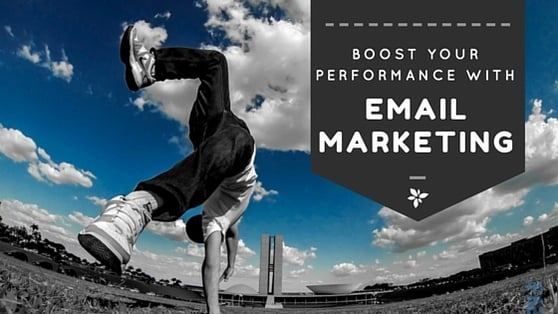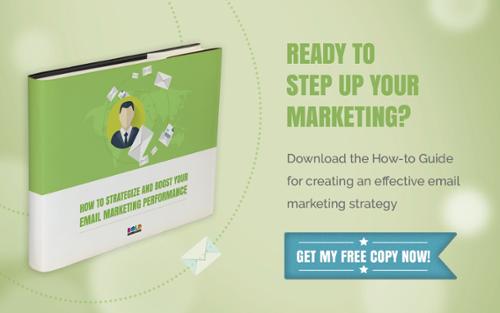3 Step Guide to Crafting an Email Marketing Strategy
Find me on:

Introduction
Email marketing is sometimes overlooked. As technology evolves marketers sometimes mistakenly think that using email as a marketing channel is spammy and obsolete. The reality is light years away. With 91% of consumers checking their email daily (ExactTarget) and a marketing ROI of 4,300% (!!) (copyblogger), if you’ve given up on email marketing, I suggest reevaluating your strategy. Email marketing done right can skyrocket your performance. In this post I’ll help you understand how to approach crafting your company’s email marketing strategy.
1. Who are you trying to reach?
It’s important to have a clear understanding of who your company’s buyer personas are. Buyer personas are fictitious representations of your ideal customer. Understanding who you are writing to, will enable you to tailor content they can relate to and benefit from.
When a prospect subscribes to your list, try collecting data from them and create segmented email lists (according to Hubspot, segmented emails get 62% more clicks than non-segmented emails).
The most basic segmentation would be based on:
- Company (industry, size and type)
- Role (department, seniority, function)
Segmentation to lists will help you personalize your emails. If for example your two main buyer personas are 1. CTOs in SMBs and 2. product managers in startups, you can create a list for each persona, and a third list for all “other” prospects who are of lower relevance to your business and could be treated in a more generic approach.
2. Content
Always put yourself in the shoes of your prospects. Make your emails as personal, relevant and appealing as possible.
Always keep this in mind – emails should add value not ask for it. Not asking for value does not mean you should not have a goal for your email. Goal examples could be:
- Download and eBook/ guide
- Watch a video
- Read a recent blog post
- Attend a webinar
- Request a free consolation
- Request a free trial
- Request a product demo
Make sure each email has only one clear goal!
Use actionable language and write as if you would write to a third grader. Your readers are impatient, emails that need deciphering will have a lower conversion rate.
A recommended email structure would be
- A personalized greeting
- An explanation of the reason for sending the email.
- An explanation of the clear benefit to the recipient (underline the benefit based on what you know about each lists recipients)
- A signature with your name, role and direct line of communication

3. Understanding basic email metrics
The following are the basic metrics you need to know:
Bounce rates
Bounces are emails that were not delivered to the recipients in your list. They can reflect a temporary or permanent problem. Hard bounces reflect permanent delivery issues such as a non-existent address, while soft bounces reflect temporary ones such as a full inbox of server issue.
Make sure to remove hard bounces from your list as they could affect your reputation and potentially mark you as a spammer by your internet service provider.
Delivery rates
This metric represents what percentage of the emails you sent actually got through to the recipients. Here’s how it’s calculated:
Number of emails sent-(hard+ soft bounces)
Number of emails sent
Needless to say, no matter how much effort you put into your email’s design and content, if it’s not delivered it’s worthless. If you notice a sharp decrease in a certain campaigns delivery rate, make sure to check your subject line and content to see whether there is an apparent reason that may have caused your internet service provider to flag that campaign as spam. Examples for this could be too many CAPS, too many exclamation points or using spammy keywords.
Click through rates
The metric represents the percentage of unique clicks that the links in your emails received. Here’s how it’s calculated:
unique clicks on all links-multiple clicks of a single recepeint
Number of emails delivered
This metric reflects the effectiveness of your email’s CTAs as well as the relevance and quality of your email to your prospects.
Read this post to learn about how to create attention grabbing, persuasive calls to actions
Conversion rates
This metric represents what percentage of the recipients of your email clicked on a link within it and then completed an action. This depends upon your email’s goals and could vary between top of the funnel goals, such as entering a blog post you want them to read or filling out a form, to bottom of the funnel goals such as subscribing to a service or completing a purchase.
This is the bottom line of your email as it reflects what percentage of your recipients converted to your designated goal. It is important to take into consideration that this metric does not stand alone – the landing page, blog or website, to which you refer your prospects to, have a dramatic effect on your email’s conversion rates. If you have high Click through rates and low conversion rates, there is either a problem of inconsistency between your email’s promise and the rest of the funnel, or – your landing pages are not tailored correctly.
Read this post about 5 rules of thumb for creating killer landing pages, in order to learn more about this subject.
In order to measure conversion rates you will need to integrate your email and web analytics. Do this by creating unique tracking URLS for each of the links in your campaign.
Open rates
This is a tricky one – open rates represent the number of emails that were both opened and displayed the images within your email. This means that if a recipient has an automatic image blocker enabled, even if they opened your email, they will not be calculated as opened. I don’t recommend measuring your campaigns again this metric.
Unsubscribe rates (Contact Churn)
The number of recipients who unsubscribed from your list. Having a low unsubscribe rate is overrated – most users will simply stop opening your emails or mark them as read instead of going through the unsubscribing process. This makes click through rates and conversion rates a few more significant success metric.
Conclusion
Implementing the above 3 tips on email marketing should help you make the most of this amazing marketing tool. Focusing on your prospects needs instead of yours can work magic to your conversion rates and boost your online performance. It’s amazing where a win-win attitude can get you. Try it.
Ready to take your email marketing to the next stage? be sure to download our FREE guide on how to strategize and boost your email marketing.
Noa Eshed
Noa is the co-author of the Amazon no.1 Bestseller "The Smart Marketer's Guide to Google AdWords" and co-host of the podcast "Real Life Superpowers". She's a content lover, certified journalist & lawyer (Hebrew U). She practices martial arts & yoga. She's been consulting and helping businesses create a significant presence online since 2010.
SHARE THIS STORY
Noa is the co-author of the Amazon no.1 Bestseller "The Smart Marketer's Guide to Google AdWords" and co-host of the podcast "Real Life Superpowers". She's a content lover, certified journalist & lawyer (Hebrew U). She practices martial arts & yoga. She's been consulting and helping businesses create a significant presence online since 2010.
Noa Eshed
Noa is the co-author of the Amazon no.1 Bestseller "The Smart Marketer's Guide to Google AdWords" and co-host of the podcast "Real Life Superpowers". She's a content lover, certified journalist & lawyer (Hebrew U). She practices martial arts & yoga. She's been consulting and helping businesses create a significant presence online since 2010.










